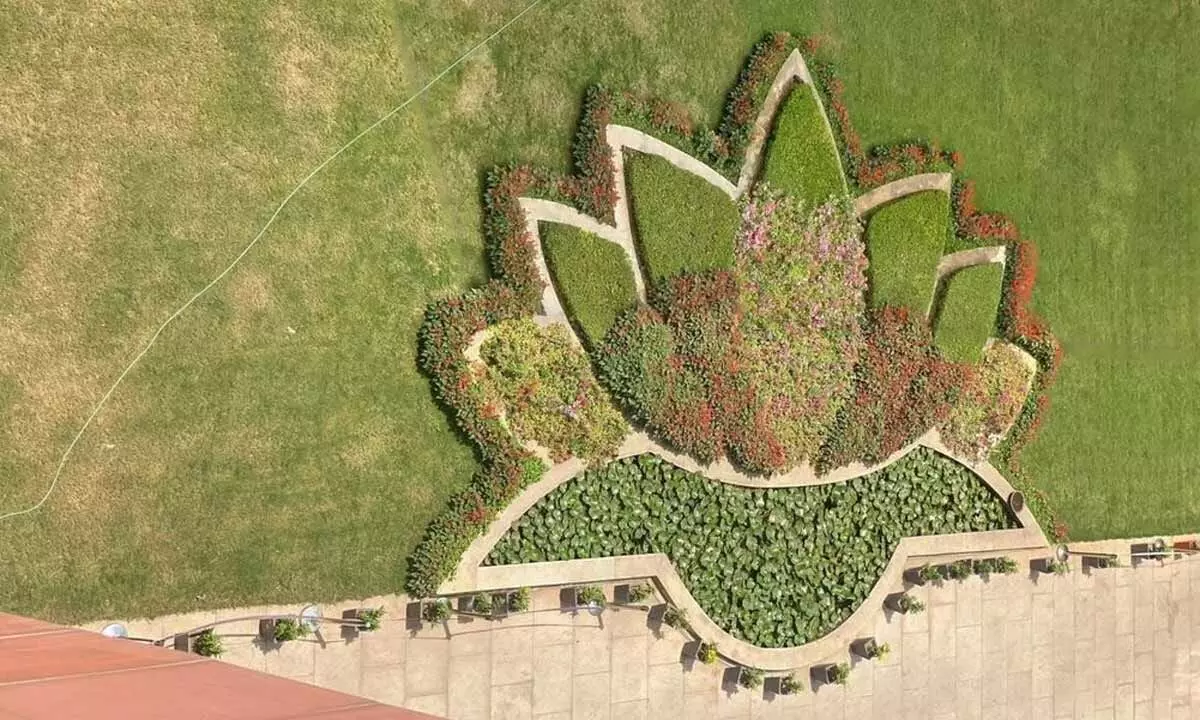Significance of Lotus in Ancient culture and architecture

The lotus, also known as Nelumbo Nucifera, is a tropical plant native to India and has numerous medicinal and nutraceutical properties.
The lotus, also known as Nelumbo Nucifera, is a tropical plant native to India and has numerous medicinal and nutraceutical properties. It is the national flower of India and associated with various Indian gods, including Vishnu, Brahma, Ganesh, Gayatri Lakshmi, and Saraswati. The lotus is considered sacred for its representation of eternal beauty, prosperity, and fertility in Hinduism, where it is believed that each human being is gifted with the true spirit of the lotus, which when channeled correctly will lead to purity of the mind and liberation of the soul.
In ancient Yoga, the cross-legged seated pose is referred to as the lotus position or Padmasana, best suited for those striving to reach the highest levels of consciousness during meditation. Hindu deities are often shown in a sitting or standing position atop a fully bloomed lotus or holding one in their hands. In Hinduism, the flower symbolizes both aesthetic appeal and untaintedness.
The Lotus, a flower found in five colors, symbolizes various virtues and virtues. White lotus represents purity, knowledge, and creation, while the red represents love and compassion. Pink lotus is sacred, symbolizing wealth and prosperity, and is often depicted with gods and goddesses holding pink flowers in their hands. Purple lotus symbolizes spiritual enlightenment, and blue lotus represents the triumph of the spirit over wisdom, intelligence, and knowledge.
The leaves of the Lotus taste bitter and contain alkaloids that have a hypotensive effect. Tea brewed from the leaves is effective in strengthening the heart and reducing blood sugar levels. New lotus leaves are effective in treating fatty liver disease and lowering lipid levels in the body.
The lotus plant has numerous edible parts, including leaves, stems, flowers, and roots, with antibacterial, antibacterial, and medicinal properties. In Hinduism, the lotus symbolizes the exalted state of man, while in Buddhism, the lotus represents rebirth as a reincarnation.
The lotus has also been embraced by other ancient faiths, such as Hinduism, Buddhism, and Jainism. Buddhist architecture in these nations is abundant with lotus symbolism, with early Buddhist sculptures often depicting Buddha as a lotus.
The lotus's enigmatic origins have a broader connection with ancient architecture. The flower closed its petals every evening, seemingly submerged in water, only to resurface and blossom anew each morning, representing regeneration and evolution.
The lotus occupies an irreplaceable position in the art and sculpture of India. In Bhagavad Gita it is used as a metaphor for detachment, unspoiled yet grounded in the murky waters and thrives to bloom.
In the 13th century, lotus gained popularity in Persian Islamic art. The throne pillar in the Diwan-i-Khas showcases influences from all major religions, with Akbar holding syncretic views. The pillar's most identifiable symbol is the lotus, which is also featured in the dome of the Taj Mahal in Agra, commissioned by Mughal Emperor Shah Jahan in 1632.
The Bahai Faith, a contemporary religious movement that made the choice to embrace peace through the lotus emblem.
Ancient literature in India is rich in the names of various flowers, including the national flower, lotus, and the lotus mother. The lotus is associated with Lord Brahma and has esoteric and sacred significance in spirituality. The Mother Goddess (Devi) is called Kamalāmba or "Lotus Mother" and resides in a thousand-petalled lotus said to be located in the Sahasrāra Chakra in the head. Lotus symbols are central in yantra patterns and form part of many designs of decoration in more secular contexts.
Many poets recognise several types of lotuses and their uses, distinguishing the varieties, colors, and time of blooming. Fractal geometry in temples is a popular design technique due to its ability to bring a sense of completeness, support the Hindu philosophical concept of "one among all, all is one," and create a sense of strength both structurally and visually. The use of self-similar elements in the design attracts visitors and pilgrims, creating a clear state of mind with a holistic perception.
In Asian art, a lotus throne is a stylized lotus flower used as the seat or base for a figure. In Hindu iconography, the lotus is often described as the "Lotus-Eyed One" (Pundarikaksha), with its unfolding petals suggesting the expansion of the soul.
The lotus flower's iconography and spiritual history are rich and deep, with each color representing a different aspect of life. The journey from a muddy seed to a glorious blossom offers hope that something beautiful can grow from suffering, and we too will eventually bloom.















